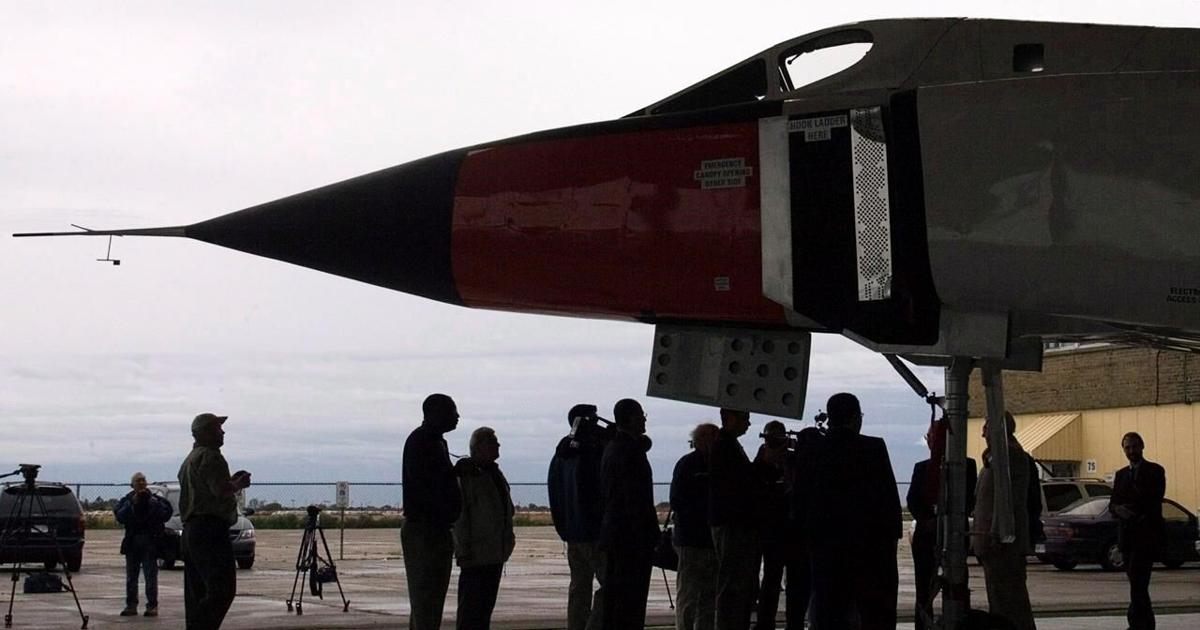I found some interesting information on the CF-105 here.
I was surprised the g-load figures. I would have thought they would have been higher.
I was surprised the g-load figures. I would have thought they would have been higher.
Follow along with the video below to see how to install our site as a web app on your home screen.
Note: This feature may not be available in some browsers.
Ad: This forum contains affiliate links to products on Amazon and eBay. More information in Terms and rules
Remember, this beast was an interceptor, it was meant to fly fast and blast Soviet bombers out of the sky, it didn't have to pull high Gs.I found some interesting information on the CF-105 here.
I was surprised the g-load figures. I would have thought they would have been higher.
While I'm aware of the role of the aircraft, the USAF usually required a g-load of 5.33 @ 80% fuel load. The CF-105 Arrow is below that figure.Remember, this beast was an interceptor, it was meant to fly fast and blast Soviet bombers out of the sky, it didn't have to pull high Gs.
Well for some reason the folks at AVRO or the RCAF didn't see the need for high maneuverability, now had the Arrow been built, who knows if the G load would have been expanded.While I'm aware of the role of the aircraft, the USAF usually required a g-load of 5.33 @ 80% fuel load. The CF-105 Arrow is below that figure.
Also, to clarify, there's a bunch of things actually regarding the g-load figures being a surpriseWell for some reason the folks at AVRO or the RCAF didn't see the need for high maneuverability
And I think if you really look into some of the Arrow's specifications, it was a great leap forward at the time it was first flown (when compared to what was operational at the time) but on it's heels were many aircraft that caught up and eventually exceeded it's capabilities. In reality, as designed, we were looking at the West's MiG-25 in many respects. Huge, powerful, heavily armed with a tremendous radar, it would have been perfect to shoot down hordes of Soviet bombers (which didn't exists)While I can't say if the g-load envelope would have been increased or not (I just don't have enough information), the aircraft did seem to be built to lower limits than ADC's aircraft from the outset, it would appear.
The listed range seems also quite low as well. The fuel fraction doesn't seem bad, and seems similar to the F-4 Phantom without drop-tanks. I would have figured it'd be able to do about the same as the F-4 when subsonic in the same configuration.
I get what you're saying.And I think if you really look into some of the Arrow's specifications, it was a great leap forward at the time it was first flown
Had Avro Canada instead made a fighter with multirole potential like the McDonnell F-4 Phantom II, which like the Arrow first flew in 1958, the Canadian division of Britain's Hawker-Siddeley might have remained a viable enterprise into the 1980s and beyond.Huge, powerful, heavily armed with a tremendous radar, it would have been perfect to shoot down hordes of Soviet bombers (which didn't exists)
It would have been a matter of convincing the rest of NATO that was the aircraft needed, instead, everyone was looking at high speed interceptors armed with missiles only.Had Avro Canada instead made a fighter with multirole potential like the McDonnell F-4 Phantom II, which like the Arrow first flew in 1958, the Canadian division of Britain's Hawker-Siddeley might have remained a viable enterprise into the 1980s and beyond.

We made the wrong aircraft for Canada's needs. Have Avro Canada make a Phantom-like multirole fighter to meet the requirements of the CF-101, CF-104 and CF-116 and even Diefenbaker might have given it the green light.Diefenbaker government's 1959 decision to scrap the fabled Avro Arrow was significantly influenced by Canadian intelligence that pointed to a diminishing need for the costly aircraft in the evolving Cold War
Actually the design spec did include the ability to carry 4000 lb. of bombs. That said, the Phantom could carry a shitload more than that.We made the wrong aircraft for Canada's needs. Have Avro Canada make a Phantom-like multirole fighter to meet the requirements of the CF-101, CF-104 and CF-116 and even Diefenbaker might have given it the green light.
I didn't know that about the Arrow. If in the global market where the USA and USSR dominate, France could find success with its Mirage series, Canada should have have success with the RIGHT product at the right time and cost.Actually the design spec did include the ability to carry 4000 lb. of bombs. That said, the Phantom could carry a shitload more than that.
Agreed. And for Canada swap in Orenda Iroquois engines and add an interceptor role.Looks like it would have been a beautiful aircraft.